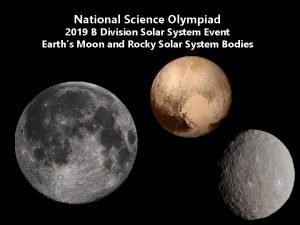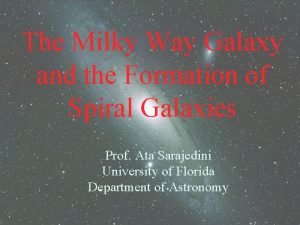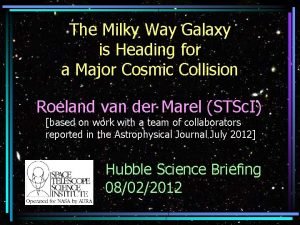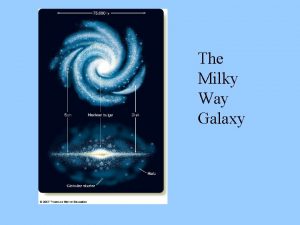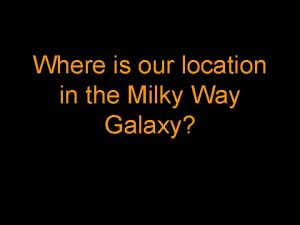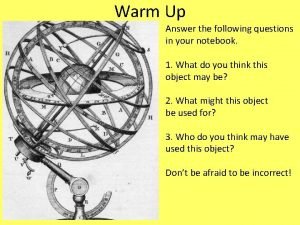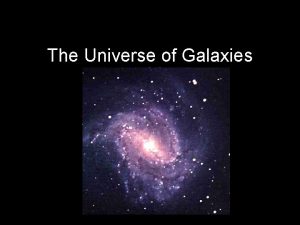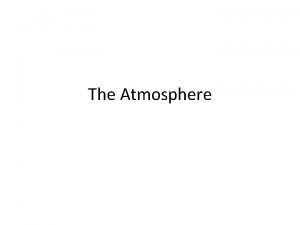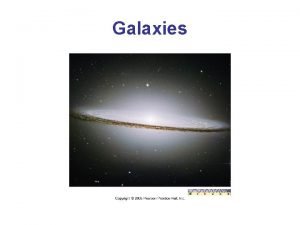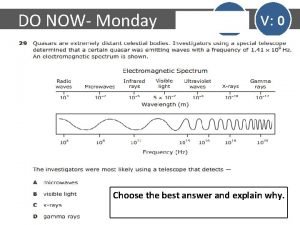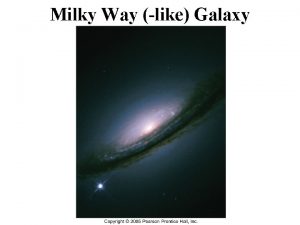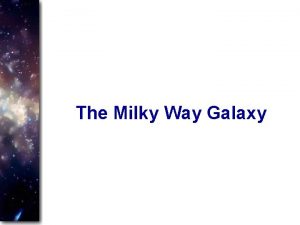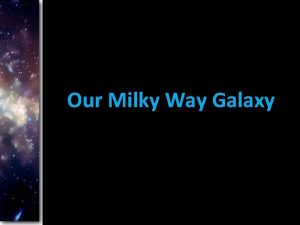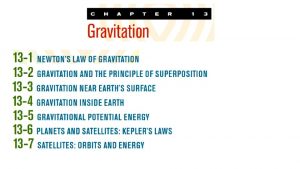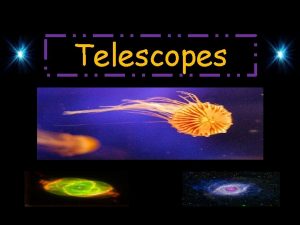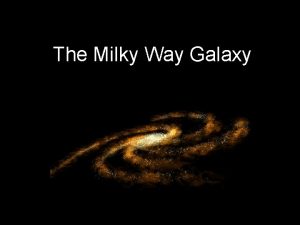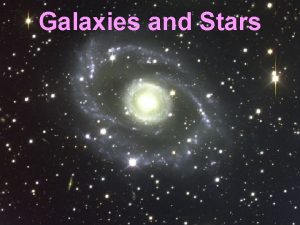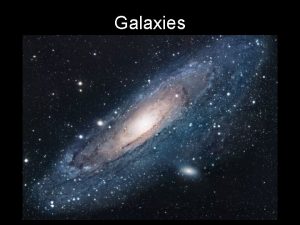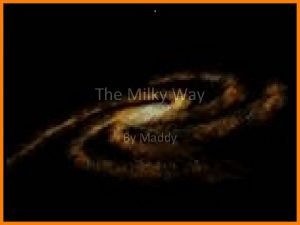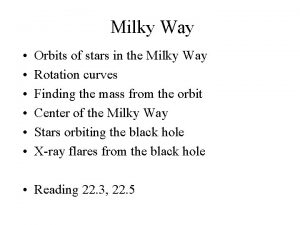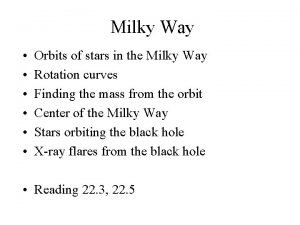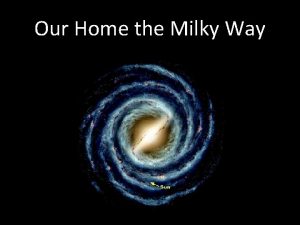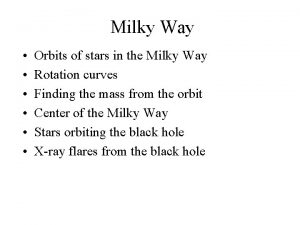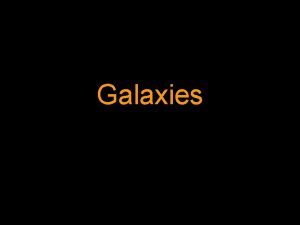Welcome to the Milky Way Galaxy Galaxies A




















- Slides: 20

Welcome to the Milky Way Galaxy

Galaxies • A galaxy is a “system of millions or billions of stars, together with dust and gas, held together by gravitational attraction. ” • There are 3 types of galaxies: Elliptical, Spiral, and Irregular • • Elliptical galaxies are elongated spheres Spiral galaxies have a spherical shape in the center with arms spiraling out Both Elliptical and Spiral galaxies have further classifications Irregular galaxies have no regular shape to them • According to astronomers, their best estimate predicts there at least 100 billion galaxies in the observable universe.

Elliptical Galaxy (NGC-1316; 62 million light years away)

Spiral Galaxy (M 83, otherwise known as the Southern Pinwheel Galaxy; 15 million light years away)

Irregular Galaxy (NGC-1569; 8, 000 light years across; 11 million light years away; considered a very close and young galaxy)

Milky Way Galaxy • This is an artist’s conception of what the Milky Way Galaxy looks like. The artist based the picture on different photos taken by astronomers. • Why don’t we have any real pictures of the Milky Way Galaxy? • Where are we located in this picture?

• We cannot photograph the Milky Way because it is so large, and we are in it. • The Milky Way Galaxy is estimated to be 100, 000 light years across. There approximately 300 billion stars in our galaxy. • That means that it would take light (the fastest speed we know) 100, 000 years to travel across the Galaxy. • Our Sun, and entire Solar System is located within the Orion Arm of the Galaxy. We are a mere dot in our Galaxy. Milky Way Galaxy

Sun Centered Model of the Solar System • Until the year 1543, it was believed that the Earth was the center of our system. • Copernicus and Galileo studied Astronomy and both contributed to what we now know of our Solar System. • The Sun is the center of our Solar System. The moon orbits the Earth and 7 other planets orbit the Sun. • Pluto was a planet for a long time, but is now no longer considered one. • Pluto is no longer considered a planet because of its size, location in space, and tilt of orbit in comparison with the other planets in our Solar System.

Inner Planets • Mercury, Venus, Earth, and Mars are considered the ‘Inner Planets’ • Also known as “Terrestrial Planets, ” which is misleading • Smaller • Either no or few moons • Made of mostly heavy metals, lots of iron and nickel • Solid Surfaces • No rings • Spin slowly compared to outer planets • Orbit the Sun quickly

Mercury

Venus

Earth

Mars

Surface of Mars

Outer Planets • Jupiter, Saturn, Uranus, and Neptune • Also known as the “Gas Giants” • Largest planets • Many moons • Made primarily of gas • All have rings • Spin quickly • Orbit sun slowly

Jupiter • "Jupiter gany" by NASA/JPL - ftp: //nssdcftp. gsfc. nasa. gov/miscellaneous/planetary/voyager/jupiter/vg 1_p 20945. tiff. Licensed under Public Domain via Wikimedia Commons - http: //commons. wikimedia. org/wiki/File: Jupiter_gany. jpg#/media/File: Jupiter_gany. jpg

Saturn

Uranus "Uranus" by NASA/JPL - http: //photojournal. jpl. nasa. gov/catalog/PIA 00032. Licensed under Public Domain via Wikimedia Commons - http: //commons. wikimedia. org/wiki/File: Uranus. jpg#/media/File: Uranus. jpg

Neptune "Neptune" by NASA/JPL - http: //photojournal. jpl. nasa. gov/catalog/PIA 00046. Licensed under Public Domain via Wikimedia Commons - http: //commons. wikimedia. org/wiki/File: Neptune. jpg#/media/File: Neptune. jpg

Asteroid Belt • Separating the inner and outer planets is an asteroid belt.
 Elliptical galaxy
Elliptical galaxy Critical density
Critical density Science olympiad solar system
Science olympiad solar system Canis major overdensity
Canis major overdensity Milky way galaxy sketch
Milky way galaxy sketch Democritus milky way
Democritus milky way Myfonterra
Myfonterra Dung beetle milky way
Dung beetle milky way Milky way description
Milky way description What is the name
What is the name Where is the solar system located in the milky way
Where is the solar system located in the milky way The milky way
The milky way Milky appearance of plasma
Milky appearance of plasma Milky ribbon worm
Milky ribbon worm Physical properties of oxygen
Physical properties of oxygen Zjezd
Zjezd Tipus de galaxies
Tipus de galaxies Th eirregulars
Th eirregulars Brainpop galaxies quiz answers
Brainpop galaxies quiz answers Electromagnetic star
Electromagnetic star Type of galaxy
Type of galaxy


